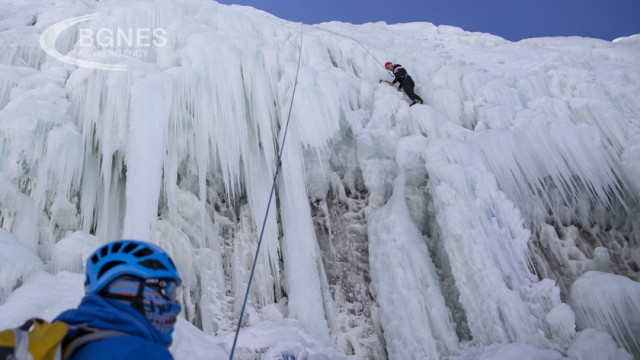It's cold. We're talking about dangerous cold. A cold that can deprive you of the ends of the nose, ears, chin, fingers or legs if you are not careful. It is called frost and comes when the skin and tissue underneath it frozen, which can happen much faster than you can imagine, CNN reported.
What causes frost?
Flashing not only depends on the outside temperature. The wind cooling factor also has an impact. As the wind speed increases, our bodies cool faster, leading to a decrease in skin temperature. Higher altitude can also increase the speed at which the skin can freeze.
The US National Meteorological Service has created a cold wind table that shows the time that can take frost at different temperatures and wind speeds. The index has been tested on models of a human face.
For example, if it is -17.8 ° C and is windless, the likelihood of freezing is relatively low. If you add wind at a speed of 25 km/h, the frost will start in 30 minutes. If the wind increases to over 80 km/h, it will only take 10 minutes to freeze.
Your skin will freeze in just 5 minutes if you are out at -31.7 ° C and wind speed just over 40 km/h.
Who is at risk?
You are more susceptible to frost, if you smoke, take medicines called beta-blockers, you have poor blood supply to your feet, diabetes or Raynaud syndrome, a condition in which strong emotions or low temperatures cause blood vessel spasm and block blood flow to The limbs.
Older people and people who live outside, without appropriate clothing, heating and food, are also at high risk, as are tourists and hunters who are not properly dressed and stay outdoors for too long.
The American Center for Disease Control and Prevention (CDC) also alarms that anyone who uses excessive amount of alcohol or illegal drugs is at high risk. Although you may have the feeling that your body is warmer, in fact your body temperature and your blood pressure drop.
And of course, the likelihood of getting frost is greater if you are not dressed appropriately for the weather.
What do frosts look like?
First degree frost: The first degree of frost is often called "ice skin" and begins with redness and needle sensation. In this case, quickly get out of the cold to avoid further skin damage.
The slight frostbite on the body can be warmed with your own body heat; For example, try to put your fingers into the armpit. Warm the flushed toes of your feet with dipping in warm, but never hot water for a maximum of 30 minutes. Since you will not be able to find out with these red fingers, try water with another part of the body to make sure it is appropriate. Heat the ears, nose and cheeks again with warm towels, soak them again and use them repeatedly.
Prepare for a little pain until frozen areas are revived. You will understand that the warming is over when the skin is soft and all the sensations are back. "But do not use stoves or pads for warming," CDC warns. These tingling parts cannot determine the temperature and can be easily burned until they warm.
Second degree frost: "surface frost" is the second stage. It is known as a second-degree frost and begins when your skin begins to turn light or gray-yellow instead of red. She can even start to look blue. Ice crystals begin to form in the skin and it can become firm and tingle with sensations. Some people say the feeling is "wax".
As pain and redness disappear, unfortunately people often do not realize what is happening to them. Not long after, however, the skin can warm up and begin to swell, which is a sign that tissue damage has occurred. This is the moment when fast medical treatment is required to prevent further, more serious damage.
Immediate warming is crucial, but it must be done carefully by trained medical professionals who will immediately boil the injured area to protect it. Occasionally, blisters filled with fluid may appear, and the skin may pinch, burn and swell dramatically.
Third -degree frost: "Deep frost" is the next stage where the skin can look blue and strewn with spots and tingle with pain and cold. Blood -filled blisters can form. The muscles near the area may not work properly. At this stage, there is a risk of blood clots and you will need anti -clotting medicines to increase blood flow to the area.
Medical assistance is crucial at this stage to avoid amputation of the injured tissue. Depending on the severity of the injury, the tissue may look black and feel firm after warming. If the tissue is dead, a process called gangrene may need to be cut or amputated. Occasionally, long -term damage to the muscles, tendons, nerves and bones in the area can also occur.
How to treat frost:
If there is no possibility of immediate medical attention, wrap the affected areas in sterile dressings, carefully dividing the injured fingers and feet from each other. But try to move the affected areas as little as possible to avoid further tissue damage. /BGNES







